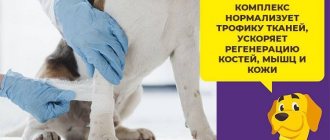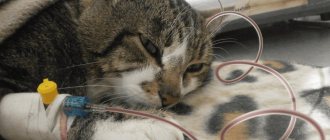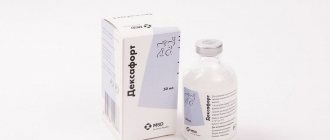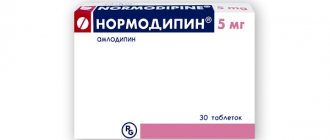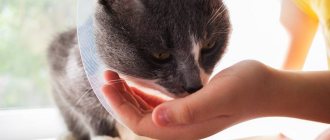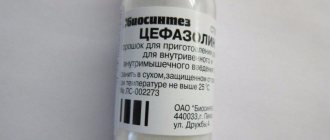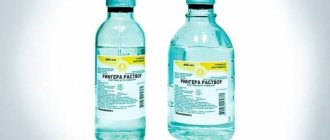Composition and mechanism of operation
The active ingredient of the drug is hydroxymethylquinoxylin dioxide. “Dioxidin” kills harmful microorganisms, promotes a speedy recovery and rapid healing of wounds. Effective against gram-positive, gram-negative, aerobic, including streptococci, staphylococci and other bacteria. They are used as drops in the nose, ears, a solution for washing infected wounds, and also for injections.
The drug is well absorbed and begins to act quickly.
Action of Dioxidin
Dioxidin in veterinary medicine is used in the form of a 1% solution in ampoules or vials. The action of Dioxidin is its antibacterial and chemotherapeutic effect. The wide range of effects lies in its ability to selectively inhibit the DNA of gram-negative, gram-positive, anaerobic, aerobic, spore-forming and non-spore-forming, pathogenic and opportunistic microorganisms of various types. Dioxidin not only fights microbial cells, but also promotes natural immunity and increased body resistance in the fight against inflammatory processes and lesions.
Can a cat have Dioxidin if it is often used for people and cattle? - a question that worries owners of meowing pets. This drug is prescribed even to small children for severe cold symptoms, which makes this medicine safe for treating cats and dogs, but only if it is prescribed by a veterinarian.
Instructions for use
For use only in adult animals, prescribed by a veterinarian. In the form of an ointment for cats, this substance is used for wounds of various etiologies. You can lubricate the affected area of skin with it, or put it on a napkin and apply it to the wound. Compresses are made with Dioxidin. For rhinitis and otitis, drop 1 drop into the nose and ears. The number of times a day depends on the severity of the disease. Only the resulting wound can be washed with the solution to disinfect it. For cystitis, flush the bladder with a catheter.
The medicine is administered intravenously in a dosage that is calculated individually based on the age and weight of the cat. The drug must be diluted with 0.9% saline solution. Instructions for use are drawn up by a veterinarian and are followed only under his supervision. For the nose, ears, inhalations and intracavitary use - 1% solution, ointment - 5%, for intravenous administration - 0.5%.
Side effects
After using the drug, side effects such as drowsiness and lethargy may occur.
Occurs rarely, mainly due to hypersensitivity to hydroxymethylquinoxylin dioxide.
When used topically, swelling, redness, rash, and itching are possible. With intravenous and intracavitary administration - headache, lethargy, drowsiness, elevated body temperature, convulsions, loose stools and vomiting. If an allergic reaction occurs, you should always have antihistamines on hand.
Dioxidine
pharmachologic effect
Broad-spectrum antibacterial bactericidal drug. Active against Proteus vulgaris, Pseudomonas aeruginosa, Friedlander's bacillus, Escherichia coli, Shigella dysenteria, Shigella flexneri, Shigella boydii., Shigella sonnei, Salmonella spp., Staphylococcus spp., Streptococcus spp., pathogenic anaerobes (Clostridium perfringens). Acts on strains of bacteria resistant to other antibacterial agents, including antibiotics. Does not have a local irritating effect. The development of drug resistance in bacteria is possible. When administered intravenously, it is characterized by a small therapeutic width, and therefore strict adherence to the recommended doses is necessary. Treatment of burn and purulent-necrotic wounds promotes faster cleansing of the wound surface, stimulates reparative regeneration and marginal epithelization, and has a beneficial effect on the course of the wound process. Experimental studies have demonstrated the presence of teratogenic, embryotoxic and mutagenic effects.
Pharmacokinetics
When applied topically, it is partially absorbed from the wound or burn surface and excreted by the kidneys. After intravenous administration, the therapeutic concentration in the blood remains for 4-6 hours. It penetrates well and quickly into all organs and tissues and is excreted by the kidneys. TCmax in the blood is 1-2 hours after a single administration, does not accumulate with repeated administrations.
Indications
Externally, locally - wound and burn infections (superficial and deep purulent wounds of various locations, long-term non-healing wounds and trophic ulcers, soft tissue phlegmon, infected burns; purulent wounds with osteomyelitis); pustular skin diseases. Intracavitary - purulent processes in the chest and abdominal cavity: purulent pleurisy, pleural empyema, lung abscess, peritonitis; cystitis, wounds with deep purulent cavities (soft tissue abscesses, pelvic cellulitis, postoperative wounds of the urinary and biliary tract, purulent mastitis). IV - septic conditions (including in patients with burn disease), purulent meningitis, purulent-inflammatory processes with generalization symptoms. Prevention of infectious complications after bladder catheterization.
Contraindications
Hypersensitivity, adrenal insufficiency (including history), pregnancy, lactation. With caution - renal failure.
Dosage regimen
Externally, locally. Ointment - apply a thin layer to the affected area once a day; Apply napkins soaked in solution to the wounds. Deep wounds are packed or irrigated with a 0.5% solution. In the form of an aerosol: 1.5-3 g of foam (when pressing the nozzle all the way for 1-2 seconds, 15-30 ml comes out of the balloon) is applied evenly (the thickness of the foam layer is 1-1.5 cm) on the wound surface, previously cleaned of purulent necrotic masses, daily or every other day, depending on the condition of the burn wound and the course of the wound process. The maximum daily dose is 2.5 g. Duration of treatment is 3 weeks. Intracavitary. The solution is injected into the cavity through a drainage tube, catheter or syringe, 10-50 ml of a 1% solution. IV drip. In severe septic conditions, a 0.5% injection solution is administered, previously diluted in a 5% dextrose solution or in a 0.9% sodium chloride solution to a concentration of 0.1-0.2%. The highest single dose is 300 mg, the daily dose is 600 mg.
Side effects
Allergic reactions. After IV and intracavitary administration - headache, chills, hyperthermia, nausea, vomiting, diarrhea, convulsive muscle twitching. Local reactions: periwound dermatitis.
special instructions
For chronic renal failure, the dose is reduced. Prescribed only when other antimicrobial drugs are ineffective.
Contraindications
Dioxidine is a fairly popular medicine. It is fully used for the treatment of purulent-inflammatory lesions in farm and domestic animals, and especially often for mastitis. Instructions for use of Dioxidin for cats include its use for: colds, upper respiratory tract infections, otitis media, purulent wounds and mucosal lesions. Dioxidin solution is used to rinse the sinuses, ears and eyes of cats and dogs.
Indications for using Dioxidin for cats:
A veterinarian can prescribe Dioxidin in the nose of cats with chronic erosive and ulcerative rhinitis, or otitis media caused by anaerobic microorganisms.
Dioxidin is available in the form of a clear 1% solution for injection, but is also used for external and abdominal use. If indicated, the veterinarian may prescribe this medication for washing wounds and cavities, compresses, or in the form of drops in the cat’s ears. Dioxidin has a wide spectrum of action and a gentle effect on the body, and therefore is prescribed to animals for many ENT diseases.
When treating rhinitis or otitis, the doctor prescribes Dioxidin in the form of drops in the nose for a runny nose or ears, 1 drop in each nasal passage. The frequency of washing depends on the severity and type of disease. Additionally, therapeutic drugs are prescribed for symptomatic treatment.
Dioxidin has no contraindications, with the exception of individual allergic intolerance and renal failure.
Side effects include:
- Muscle tremors;
- Increased body temperature;
- Allergic manifestations;
- Digestive disorders;
- Chills.
The antimicrobial antibacterial effect of Dioxidin has a beneficial effect on the healing process and prevents the development of severe purulent infections with timely initiation of treatment. It is important not to self-medicate the animal, but to seek advice from a veterinarian.
1. GENERAL INFORMATION.
1.1. “Dioxidine 1% solution” (Solutio Dioxydini 1.0%) is a preparation that contains: 1,4-di-N-oxide 2,3-diacetoxymethyl quinoxaline preservative and water for injection.
1.2. The drug is a transparent greenish-yellow liquid with a bitter taste and odorless. The presence of crystals is allowed when stored below 15ºС. Before using the drug, they are dissolved by heating the contents of the bottle in a boiling water bath.
1.3. The drug is produced packaged in ampoules of 10.0 and 20.0 cm3 or in bottles of 10, 20, 100 and 200 cm3. Other packaging is allowed, ensuring the safety and quality of the drug and agreed upon in the prescribed manner. Each packaging unit is marked in accordance with the specifications.
1.4. The drug is stored with caution (list B) at a temperature of 5 to 25 ° C in a dry place, protected from light. Shelf life is 2 years from the date of manufacture.
2. PHARMACOLOGICAL PROPERTIES
2.1. Dioxidin is a broad-spectrum antibacterial chemotherapeutic drug that is active against gram-negative, gram-positive pathogenic and opportunistic aerobic and anaerobic microorganisms of spore-forming and non-spore-forming species.
2.2. Dioxidin selectively inhibits DNA synthesis in a microbial cell without affecting the synthesis of RNA and protein; causes structural changes in the cell wall and nucleotide of bacteria, suppresses the activity of extracellular bacterial nuclease and α-toxin.
2.3. By increasing antibacterial activity through systemic routes of administration (parenteral, intracavitary) under conditions of an infected organism, dioxidin helps to increase the general nonspecific resistance of the organism.
2.4. The drug has a “gentle” effect on lactic acid microflora and is bactericidal for bacteria that have low sensitivity and resistance to other chemotherapeutic agents and antibiotics.
3. APPLICATION OF THE DRUG
3.1. A 1% solution of dioxidine, in the form of a single preparation, is used to treat early secretion disorders in individual lobes of the udder and hidden mastitis of cows, as well as for preventive sanitizing treatments of the udder at the beginning of the dry period.
3.2. A 1% solution of dioxidine is used instead of antibiotics and complex antibiotic-containing drugs in generally accepted treatment regimens for clinical mastitis in cows.
3.3. Before administering the drug, the secretion (milk, exudate) from the diseased lobe of the udder is carefully milked, and the teat is disinfected. The drug is heated to 40°C, shaken and injected through the nipple canal using a catheter attached to the cannula of a syringe. After administering the drug, the nipples are lightly massaged from bottom to top.
3.4. When treating early secretion disorders, a dose of 10.0 cm3 is administered into the diseased lobe of the udder with an interval of 8-12 hours. within two days.
3.5. When treating hidden mastitis, a dose of 20.0 cm3 is used to inject into the diseased lobe of the udder twice a day for 3-4 days.
Question answer
A cat has eczema - can it be transmitted to humans?
No, the disease is not directly transmitted to humans. The exception is those moments when a person has skin lesions that were in direct contact with the purulent discharge of a cat’s weeping eczema. In such cases, complications of these injuries can sometimes occur. In all other cases, it is enough to simply wash your hands after contact with a sick animal and that’s it.
How to treat eczema in a cat?
Treatment should be carried out by a specialist, because The disease is complex and capricious. Cases have been recorded where the disease persists throughout her life, no matter what treatment was given. In any case, the general therapeutic course includes: antibiotics (orally and/or by injection), local treatments with ointments and creams with a complex effect (hormonal, antipruritic, antibacterial), surface rinsing with antiseptic solutions, intravenous drips, hepatoprotectors.
What is the difference between weeping eczema and dry eczema?
The names of the pathologies speak for themselves. A skin area with a moist surface in a cat without hair, moist, shiny, with ichor and sometimes with pus. Dry - has no signs of wetting, but has flaky areas with scratches, dried crusts, rashes, baldness, etc.
What are the main signs of eczema?
If you notice areas of redness, swelling, rashes or blisters with liquid contents, large weeping wounds, areas of baldness and flaky areas of skin that are hot, you can be sure that your pet is developing eczema. At the same time, in the veterinary clinic it is important to exclude ringworm and scabies (intradermal mites).
Is it possible to prevent eczema in cats?
Yes, it's quite possible. To do this you should:
- carry out regular treatments for worms and cutaneous and intradermal parasites;
- regularly inspect your pet’s skin, especially if you notice that the animal is licking or scratching itself a lot;
- feeding only those foods that do not or potentially will not cause an allergic reaction;
- timely replacement of collars and leashes for walks, do not wear them at all if the first signs of irritation are noticed;
- monitor your general health and promptly treat internal diseases;
- protect the animal from stress.
How long does eczema last in cats?
The duration of the disease until recovery is very diverse, because it is influenced by many different factors: the causes, the pet’s immunity, the degree of neglect and the correctness of the prescribed treatment. Under all favorable conditions, the disease never lasts more than 1 month. If any complications arise, the pathology can last for years and even a lifetime.
source
Medicines for animals > Dioxidin 1% (solution)
The information posted on this page is for informational purposes only and cannot be used for self-medication!
Before using medications, consultation with a specialist is MANDATORY! Brief description: the effective antibacterial drug Dioxidin 1% exhibits a pronounced bactericidal effect against most gram-positive and gram-negative anaerobic and aerobic pathogens, both spore-forming and non-spore-forming species. The medicine is also active against bacteria that are resistant and have low sensitivity to other antibiotics. When used, the drug has a “gentle” effect on lactic acid microflora. A drug is prescribed for the treatment of latent mastitis, secretion disorders at an early stage, as well as at the beginning of the dry period for sanitizing preventive treatments of the udder. For whom: the medicine is used to treat pathologies of the udder of infectious origin in cows and goats. Release form: the drug is a greenish-yellow, bitter-tasting, transparent liquid, which contains 1,4-di-N-oxide of 2,3-diacetoxymethyl quinoxaline, water for injection and a preservative. The solution is sold packaged in glass ampoules or bottles of 10, 20, 100, 200 cm3. If the drug is stored at temperatures below 15 degrees, crystals may form in it, which are dissolved before use by heating the bottle in a water bath. Dosage: Dioxidin 1% is used as a replacement for antibiotics in standard treatment regimens for mastitis in cattle and goats. Before administering the solution, the affected portion of the udder is thoroughly milked and the teat is disinfected. The drug, having previously been shaken and heated to a temperature of 40 degrees, is administered using a catheter syringe attached to the cannula through the nipple canal. After insertion, the nipple is gently massaged from bottom to top. When treating secretion disorders, 10 ml of solution is administered for 2 days every 8-12 hours; when treating hidden mastitis, 20 ml of solution is administered 2 times a day for 3-4 days. To treat chronic mastitis, 30 ml of solution is injected into the diseased lobe of the udder every 12 hours for 5-8 days. For prophylaxis before the dry period, 30 ml is injected once into each lobe of the udder on the 4th day after its onset. Limitations: if the recommended administration regimens are followed, no side effects are observed. Sometimes allergic reactions may develop. Contraindication is the animal's hypersensitivity to the components of the drug. Milk during the treatment period is allowed to be consumed after the last injection 24 hours later. If inflammatory processes occur in the nose and ears, Dioxidin for cats is used. Often used in veterinary medicine, it has an antibacterial effect. Available in the form of ointment, nasal drops and solution for injection. Every home first aid kit should contain this drug for cats.
Indications
Dioxidine is a fairly popular medicine. It is fully used for the treatment of purulent-inflammatory lesions in farm and domestic animals, and especially often for mastitis. Instructions for use of Dioxidin for cats include its use for: colds, upper respiratory tract infections, otitis media, purulent wounds and mucosal lesions. Dioxidin solution is used to rinse the sinuses, ears and eyes of cats and dogs.
Indications for the use of Dioxidin for cats
:
A veterinarian can prescribe Dioxidin in the nose of cats with chronic erosive and ulcerative rhinitis, or otitis media caused by anaerobic microorganisms.
